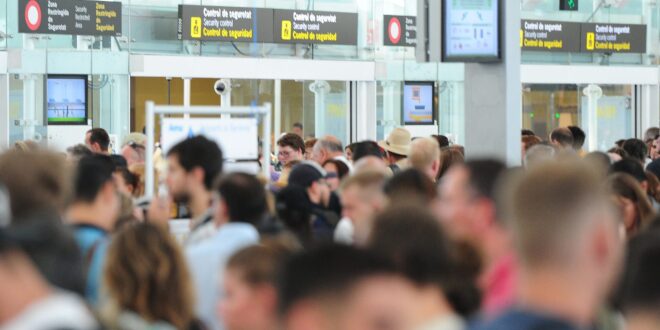THE EU’s long-awaited Entry/Exit System (EES) has actually been postponed once more because of significant nations still not being prepared.
The automated computer system will put on British and various other ‘third-country’ nationals taking a trip to any one of the 29 Schengen Location nations, consisting of Spain.
It will certainly check their tickets as opposed to marking them and will immediately track the variety of days they have actually invested in the EU.
The action is to prevent individuals from non-EU nations overstaying their normal 90 in 180 day limitation.
Nonetheless, in spite of being because of turn out on November 10, it has actually been put on hold forever, without any brand-new begin day revealed.
Resources claimed significant nations, especially France, Germany and the Netherlands, are merely not all set to apply the system.
Ylva Johansson, the Commissioner for Home Matters, revealed the hold-up at the end of a conference of EU inside preachers on Thursday.
She claimed that November 10 ‘is no more on the table’, including: “I wish we can begin immediately however there’s no brand-new timeline thus far.
” This likewise depends upon the lawful analysis that we will certainly do and we’re working with it now.”
Exactly how will the Entry/Exit System function?
The EES will certainly call for non-EU people to check their tickets at self-service stands when getting in and leaving the bloc.
Nonetheless it will not put on EU locals, consisting of British connection owners in Spain.

While the system intends to boost protection and minimize overstays, there are concerns it can result in lengthy lines up at boundary controls– specifically at Dover and Gibraltar.
The system will certainly gather biometric information, consisting of face scans and finger prints, and document access and departure times, making it a lot harder for site visitors to overstay the 90-days-in-180 policy.
British federal government companies and traveling sector agents have actually formerly cautioned of possible mayhem at boundary crossings.
While authorities assert to be functioning to reduce disturbance, tourists are suggested to permit added time for boundary checks when preparing their journeys.
The EES is simply one component of a larger overhaul of boundary controls.
From 2025, tourists will certainly likewise require to request the European Traveling Info and Consent System (ETIAS) prior to their journey.
For the rate of EUR7, this extra approval to get in the Schengen area is most likely to contribute to refining times. The ETIAS will certainly stand for 3 years, or till the proprietor’s ticket runs out.
Both advancements have actually been welcomed with severe qualms in Gibraltar, which will likely see its liquid boundary with Spain work to a stop.
The little region depends on 15,000 Spain-based employees going across the boundary every day.
The federal government of Gibraltar revealed in the summertime that Spain had actually currently begun developing the EES framework at the boundary as hopes of a post-Brexit boundary bargain diminish.
 Costa News Spain Breaking News | English News in Spain.
Costa News Spain Breaking News | English News in Spain.





